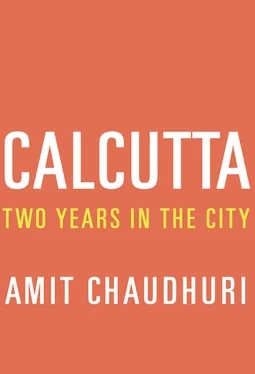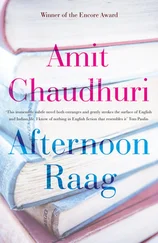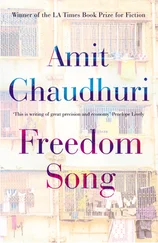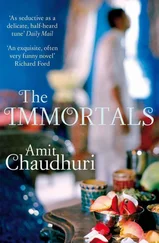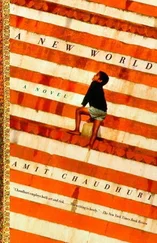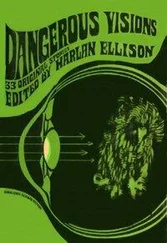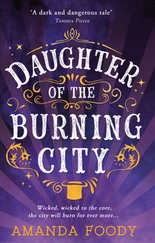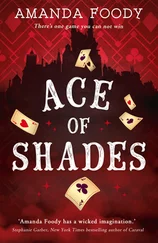I spoke about my rebirth as a writer in the mid-eighties — which would lead me to start writing my first novel in 1986. About this time, India, too, was having a rebirth. But the two births weren’t coeval or connected; they took place near each other without being affected by that proximity in any way. I noticed, in a surly, suspicious fashion, the nation’s second birth, though I became aware of it as such only in retrospect; the nation, naturally, didn’t notice mine.
Mine was a sort of event that’s perhaps unsurprising in the lives of poets, but incongruous for a yet-to-be novelist. Allen Ginsberg describes it occurring in his life as an episode — in the late forties, he was masturbating (“jacking off”) in Harlem, his life having plumbed a new low, while (speaking of incongruities) he had a book of Blake’s poems open at his side. On that page, fortuitously, was “Ah, sun-flower”—“Ah, sun-flower! weary of time,/Who countest the steps of the sun:/Seeking after the sweet golden clime,/Where the traveller’s journey is done.” Ginsberg had just come, and was lying in a stupor—“that state … of hopelessness, or dead end”—his eyes “idling” over the poem, which he’d read so many times that “it didn’t make any particular meaning”—when he suddenly understood it was addressed to him; he was the sunflower. And, almost at once, he heard a “deep earthen grave voice”: “I didn’t think twice … [it] was Blake’s voice … so completely tender and beautifully … ancient.” And then a thought arrived: “I suddenly realised that this existence was it !” I’m especially struck, in this story, by Ginsberg’s account, in the light of this thought that had just come to him, of the view from his window: “What I was speaking about … was … that the cornices in the old tenement building in Harlem … had been carved very finely in 1890 or 1910. And were like the solidification of a great deal of intelligence … and love also. So that I began noticing in every corner where I looked evidences of a living hand …” I’m moved by the invocation of cornices; because no sooner had I had my intimation in 1985, when I was twenty-three (“that this existence was it ”), than, for some reason, I thought of Calcutta, a city I had not grown up in, and recalled, particularly, those household features that had always absorbed me: the slatted windows, the lintel that came to rest horizontally to secure a doorway, the round iron knocker-like rings that hung from the stone sides of the terrace.
* * *
I mentioned that, around then, India too was having its rebirth. My parents had moved from the centre of Bombay to St. Cyril Road in Bandra: an idyllic location. I spent a year there between graduating from University College London and going to Oxford as a graduate student. I was thinking about Calcutta, and had no higher ambition than to write a novel about a boy spending his vacations there with his cousins — much as I did when I was a child. The idea of the holiday excited me for some reason: I had no idea why. The book wouldn’t have a plot as such, although I was hardly conscious of this, and, anyway, wouldn’t have seen that as a problem; what it would have, instead of story, was the boy’s sense of escape and freedom.
Change was afoot, and there was more than a hint of danger heralding the nation’s rebirth. After midnight, in Bombay, the underage children of the rich would drive their parents’ cars at high speed, losing control and running over people asleep on the pavement. I recall the earliest of these calamities took place on Turner Road, which St. Cyril Road opened on to; people slept out on the pavement there, and, one morning, we heard how they’d been killed when a young man’s car went berserk temporarily. But maybe this wasn’t the first of these incidents involving young people and cars: we knew the ghazal singer Jagjit Singh’s family, and learnt one day of how his son had driven very fast out of the house, crashed into a lamppost, and died instantly. It’s not that there weren’t mishaps in Bombay before; they happened all the time. It’s just that these accidents had a different ethos; they were marked by a curious impatience and irresponsibility, a mood the country hadn’t quite had access to before. When you read about them in the local paper, it was difficult to tell what caused the disquiet you felt — the incident itself, or the sort of energy it represented.
The nation had a second birth, and so did Hinduism. I remember noticing a new slogan on the backs of trucks in Bombay: Garv se kaho hum Hindu hain —Say proudly, I’m Hindu. The trucks were full of exultant, huddled demonstrators. Not just India and Hinduism — the world was in the midst of another birth. The moment would reach its apotheosis with the destruction of monuments: the Berlin Wall; the Babri Mosque. All these were events linked to the annunciation of a new order.
From the nineteenth century onward, Hinduism existed, in the minds of Orientalist scholars and tourists of spiritual experience, in connection with slowness, dilatoriness, and vacancy. The annual growth rate of the gross domestic product was called, in a joke that had currency in bureaucratic circles, the “Hindu rate of growth”: this, in the protected economy created by Jawaharlal Nehru. After Manmohan Singh’s “liberalisation” of the economy in 1991, the trade barriers coming down for the first time, and the concerted dismantling of the Babri Mosque by the Bharatiya Janata Party’s foot soldiers a year later, Hinduism appeared to embrace velocity and real time; under the BJP government that followed, the “Hindu rate of growth” became an urgent matter.
Two cities were altered by the alchemy of globalisation. The first one I grew up and was unhappy in: Bombay. By the eighties, it suddenly felt less like a commercial centre, which it had been for decades, than a nerve centre. Its metier — of glitter, movement, reflected surfaces, of existing in a perpetual present — had merged perfectly with the world’s new-found metier, and India’s. The eighties confirmed Calcutta’s economic decline under the Left Front government, its (to use the word Joyce once used of Dublin) “paralysis”; but they also announced that the sort of lyricism that Calcutta represented, with its central paradox — that life and the imagination would hover most palpably over decay and dereliction — was now unviable. By the early eighties, the death knell of modernity was being sounded everywhere. Calcutta was one of the great casualties of that passing; it’s not that it suddenly began to fail, but that its long history and aura of failure, cherished and even metamorphosed into something vital by the Bengali imagination, ceased to be intellectually or artistically instructive or illuminating. Without the transformative effect of the imagination, decay is just decay, disrepair plain disrepair. This is what happened to Calcutta in the eighties.
Like certain genres and styles of writing, certain cities too become unviable at particular points in history: they become impossible to inhabit or use; without our realising it, they grow inaccessible. Look at the career of poetry in the globalised world, for instance; its story of near extinction. To write a poem today sometimes feels like rehearsing a bygone moment of history. To live in Calcutta, to negotiate the maze of its lanes and alleys, almost feels the same. I could still tap the magic of its neighbourhoods when I wrote my third novel, Freedom Song , in the mid-nineties; but, after that, I felt I couldn’t do so any longer — just as a teenager might outgrow a “phase” of writing poems, or a writer feel compelled to discard an evocative, fluent style of writing for an intransigent one. And, for this reason, I resisted, for three years, the idea of writing this book, until the poet Utpal Basu’s comments made me think again of the “citizens” who live in the city today — khurima, the old woman outside Sealdah Station; the merrymakers, exuding menace and discomfort, on Christmas Day on Park Street.
Читать дальше
